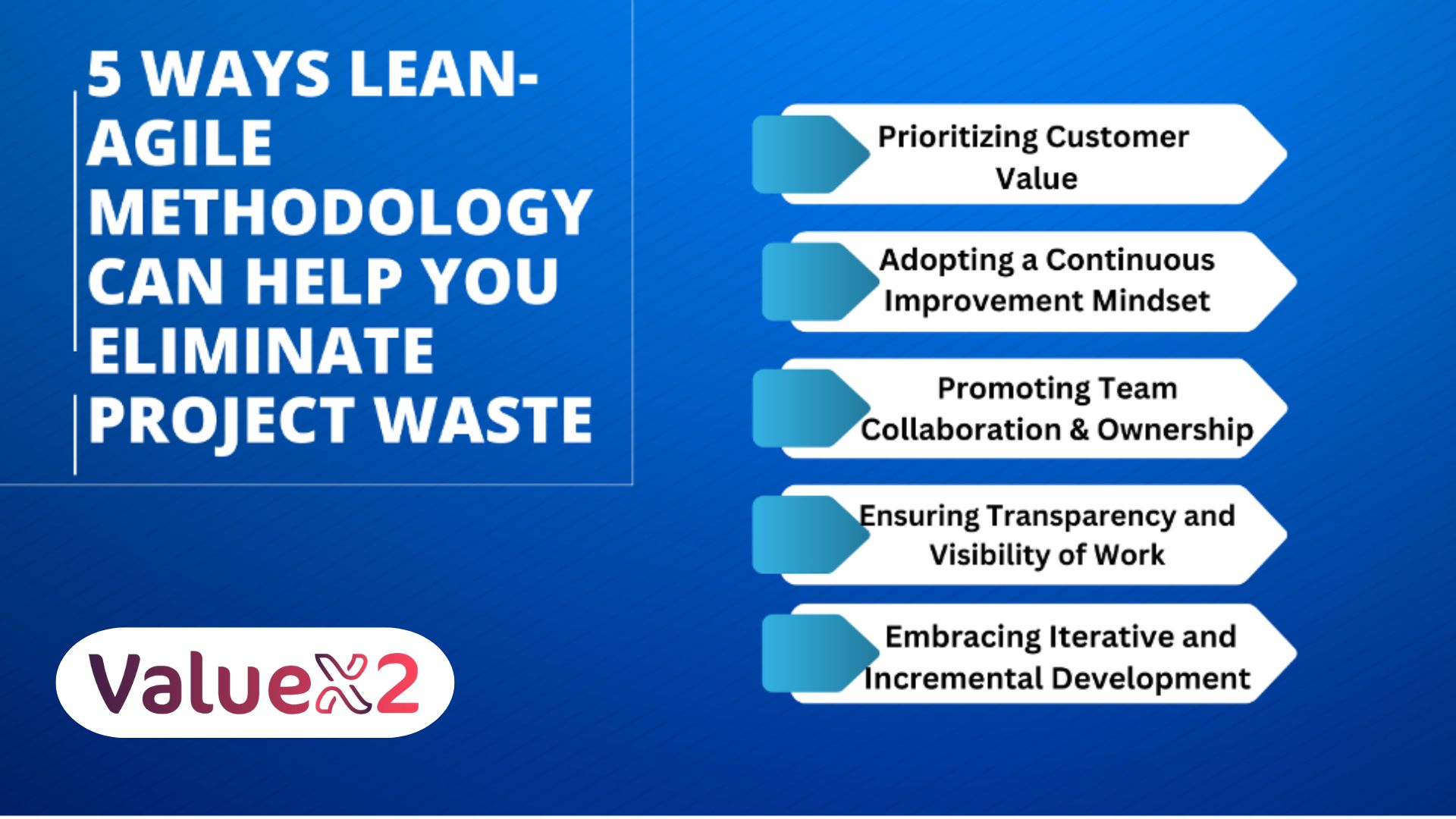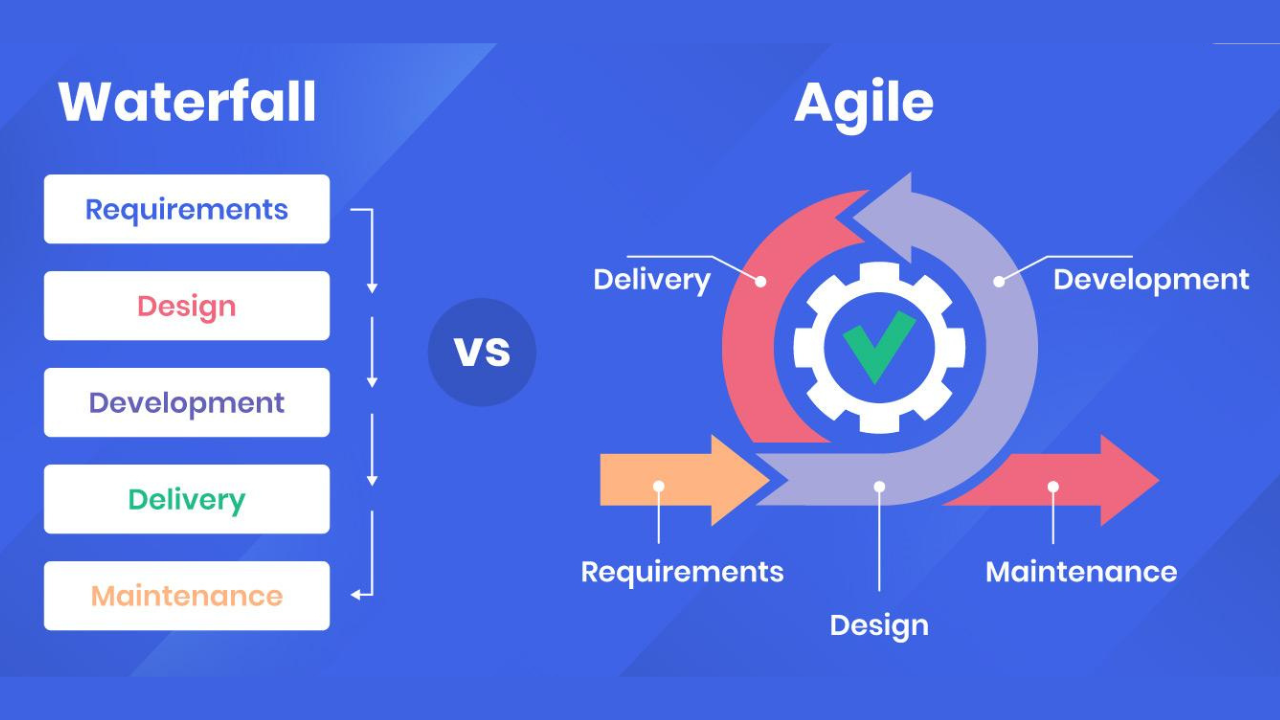Learn the 5 ways Lean-Agile methodology can help in eliminating project waste and ensure efficient, successful, and customer-centric product delivery.

Delivering initiatives on time and within the budget is crucial for success in an ultra-modern rapid-paced corporate environment. Traditional organization control methods, then again, frequently fall short of those objectives because of their rigid and sequential approach. This is where the Lean-Agile methodology comes in.
Lean-Agile project management is a customer-centric, iterative approach that promotes continuous improvement, collaboration, and transparency. It blends the Lean standards of minimizing waste and enhancing drift with the Agile ideals of customer cooperation and adapting to trade. Organizations that use Lean-Agile can simplify their procedures, enhance product first-rate, and raise average productivity.
In this blog, take a look at the 5 ways the Lean-Agile methods that can help in reducing project waste. We will talk about how to prioritize client price, put into effect a non-stop development approach, encourage employee cooperation and ownership, ensure work openness and visibility, and include iterative and incremental improvement. By the end of this post, you will have a solid understanding of how Lean-Agile can benefit your business and assist you in accomplishing tasks efficiently and effectively.
What is Lean-Agile?
Lean-Agile is a task control method that combines the concepts of Lean and Agile to assist organizations in delivering exceptional initiatives quicker and with extra performance. The key ideas of Lean-Agile consist of purchaser’s fee, continuous improvement, collaboration, and transparency.
Customer focus is the core of Lean-Agile. The aim is to create products or services that meet the expectations of customers and offer value. Continuous development is another crucial principle. Teams should continuously evaluate and compare their methods to perceive the scope of development and make adjustments to optimize their workflow.
Collaboration is a vital component of Lean-Agile. Teams need to paint together to gain the not-unusual intention of handing over a hit project. Transparency is likewise important, as everybody in the team needs to be aware of the project’s progress, desires, and demanding situations.
Lean-Agile is very adaptable and adjustable than conventional project control methods inclusive of Waterfall. Waterfall is a sequential procedure that progresses from one step to the next, with every section being completed before intending to the following. If mistakes are detected later in the procedure, they may cause delays and lead to further alterations. Lean-Agile, on the other hand, employs an iterative strategy wherein teams work in short cycles to attain incremental changes. This allows more adaptability and response to converting client demands or marketplace conditions.
The Trouble of Challenging Waste
Project waste is an activity that doesn’t add value to the project or the end product, and could be a sizable problem in traditional project management methodologies. This waste can take many forms, along with needless tactics, reworks, delays, defects, and unused capabilities. Project waste is damaging to the undertaking’s success because it will increase value, reduce quality, and regularly end in neglected time limits.
Project waste can also reduce deliverables. For example, if the group does not follow a defined technique or requirements, it is able to lead to defects within the final product. Additionally, if the team does not have the right and clear information or lacks transparency in the work culture, it can cause misunderstandings and miscommunications, and ultimately, might fail to deliver the expected results.
Project waste is a pervasive problem in traditional project management methodologies that can negatively affect the fulfilment of a project. The Lean-Agile technique offers sensible answers to cope with those demanding situations and helps companies get rid of waste, increase productivity, and deliver incredible projects on time and within the price range.
5 Approaches Lean-Agile Can Help in Removing Waste
We discussed the concept of Lean Agile and its need. Now, let’s delve deeper into how Lean-Agile can help eliminate project waste. Here are the 5 ways Lean-Agile methodologies can help in achieving waste removal:
1. Prioritizing Customer Value
One of the principle standards of the Lean-Agile method is setting the customer first. By prioritizing customer value, corporations can ensure that they are handing over products and services that meet the requirements. This, in turn, reduces the risk of assignment waste due to unused capabilities or functions.
To prioritize consumer costs, agencies can adopt the following practices:
- Conduct user research and collect remarks to apprehend the needs and expectations of clients
- Define and prioritize features primarily based on their value to customers
- Continuously compare and modify priorities based on client feedback
2. Adopting a Continuous Improvement Mindset
Continuous improvement is another key attribute of the Lean-Agile methodology. By constantly looking for ways to improve strategies and outcomes, organizations can find ways to eliminate waste of resources. This facilitates to ensure that projects are completed effectively and efficaciously.
To undertake a continuous improvement attitude, corporations can put into effect the following practices:
- Set measurable goals and regularly progress toward achieving them
- Collect statistics and use them to discover scopes of improvement
- Experiment with new processes and examine the success and failures
3. Promoting Team Collaboration and Ownership
Effective collaboration and ownership are essential to achieve the desired results and and remove the waste. By adopting collaboration and taking tasks’ ownerships, teams can be more responsible and accountable. This ensures that everyone is working in the direction of identical goals and that personal contributions are aligned with the requirements of the task.
For collaboration and ownership, organizations can put into effect the subsequent practices:
- Encourage open communication and collaboration among team individuals
- Empower team members to take ownership of their work and make decisions
- Foster a lifestyle of non-stop studying and development
4. Ensuring Transparency and Visibility of Work
Transparency and visibility are vital for effective management. By ensuring that everyone responsible for the venture has access to the required data, corporations can reduce the risk of waste as a result of misunderstandings or miscommunications.
To ensure transparency and visibility of work, businesses can implement the following practices:
- Use project management tool to track progress and proportion records
- Hold ordinary meetings to review development and communicate about neccessary changes
- Provide access to applicable documentation and sources
5. Embracing Iterative and Incremental Development
Finally, by embracing iterative and incremental development, businesses can reduce the risk of mission waste due to rework, defects, or delays. Iterative and incremental development entails breaking down tasks into smaller, more attainable portions, and constantly testing and refining at every level.
To include iterative and incremental improvement, corporations can implement the following practices:
- Use Agile frameworks, consisting of Scrum or Kanban, to control initiatives and have a better view of the progress
- Conduct frequent reviews and retrospectives to identify areas for development
- Continuously test and validate work to achieve desired results and reduce waste
Conclusion
The Lean-Agile technique gives an effective approach to mission control which can help companies reduce waste and boost productivity. By prioritizing customer value, adopting a non-stop improvement mindset, promoting team collaboration and ownership, ensuring transparency and visibility of work, and embracing iterative and incremental improvement, businesses can head towards accomplishing their tasks efficiently and successfully. These practices can help companies reduce the hazard of waste as a result of unused functions, remodelling, delays, and miscommunications. By adopting the Lean-Agile method, organizations can attain humungous achievements and offer exceptional services and products.

Bhavna is an Agile Coach and Consultant with over a decade of experience in advisory, corporate finance, IT assurance, and operations at Big 4 and within the industry in the UK and India. She has recently been the CEO of a start-up where she implemented agile practices within HR, Marketing, and Product teams.
She is also a SAFe® Practice Consultant (SPC) and authorized instructor for ICAgile Agility in HR (ICP-AHR), Agility in Marketing (ICP-MKG), and Business Agility Foundations (ICP – BAF) training courses. She provides training for agile transformation to corporate, public, and private batches, as well as consulting for enterprise agile transformation.






